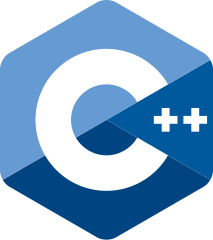| 1 |
The Open-Closed Principle - Part 1 - The Original Version |
 |
|
| 2 |
The Open-Closed Principle - Part 2 - The Contemporary Version - An Introduction |
 |
|
| 3 |
Lambda Expressions and Java 8 - Lambda Calculus, Lambda Expressions, Syntactic Sugar, First Class Functions |
 |
 |
|
| 4 |
De Morgan's Laws are Monoid Homomorphisms |
 |
|
| 5 |
Arrive at monads by going from composition of pure functions to composition of effectful functions |
 |
|
| 6 |
Compositionality and Category Theory |
 |
|
| 7 |
Functor Laws |
 |
|
| 8 |
Natural Transformations |
 |
 |
|
| 9 |
Monad as Functor with pair of Natural Transformations |
 |
 |
|
| 10 |
Point-free or Die - Tacit Programming in Haskell |
 |
|
| 11 |
Monad Laws Must Be Checked |
 |
 |
|
| 12 |
Kleisli Composition |
 |
 |
|
| 13 |
Writer Monad for logging execution of functions |
 |
 |
|
| 14 |
Applicative Functor - Part 1 |
 |
 |
|
| 15 |
Sequence and Traverse - Part 1 |
 |
|
| 16 |
Definitions of Functional Programming |
 |
|
| 17 |
Monoids - Part 1 - With examples using Scalaz and Cats |
 |
 |
|
| 18 |
Monoids - Part 2 - With examples using Scalaz and Cats |
 |
|
| 19 |
Sequence and Traverse - Part 2 |
 |
|
| 20 |
Sequence and Traverse - Part 3 |
 |
|
| 21 |
Functor Composition |
 |
|
| 22 |
Monads do not Compose |
 |
|
| 23 |
Monad Transformers - Part 1 |
 |
|
| 24 |
Addendum to `Monads do not Compose` |
 |
|
| 25 |
Non-strict functions, bottom, and Scala by-name parameters |
 |
|
| 26 |
Function Composition - forward composition versus backward composition |
 |
|
| 27 |
Year when lambda functions were introduced in various languages |
|
| 28 |
Ad hoc Polymorphism using Type Classes and Cats |
 |
|
| 29 |
Symmetry in the interrelation of flatMap/foldMap/traverse and flatten/fold/sequence |
 |
|
| 30 |
Functional Effects - Part 1 |
 |
|
| 31 |
Functional Effects - Part 2 |
 |
|
| 32 |
Applicative Functor - Part 2 |
 |
 |
|
| 33 |
Applicative Functor - Part 3 |
 |
 |
|
| 34 |
State Monad |
 |
|
| 35 |
Scala 3 by Example - Algebraic Data Types for Domain Driven Design - Part 1 |
 |
 |
|
| 36 |
The Monad Fact Series |
 |
 |
|
| 37 |
Monad Fact #1 |
 |
|
| 38 |
Monad Fact #2 |
 |
|
| 39 |
Monad Fact #3 |
 |
|
| 40 |
Monad Fact #4 |
 |
|
| 41 |
Monad Fact #5 |
 |
|
| 42 |
Monad Fact #6 |
 |
 |
|
| 43 |
From Scala Monadic Effects to Unison Algebraic Effects |
 |
 |
|
| 44 |
Scala 3 by Example - Algebraic Data Types for Domain Driven Design - Part 2 |
 |
 |
|
| 45 |
Game of Life - Polyglot FP - Haskell and Scala - Part 1 |
 |
 |
|
| 46 |
Game of Life - Polyglot FP - Haskell and Scala - Part 2 |
 |
 |
|
| 47 |
Game of Life - Polyglot FP - Haskell and Scala - Part 3 |
 |
 |
|
| 48 |
Folding Unfolded - Part 1 |
 |
 |
|
| 49 |
Folding Unfolded - Part 2 |
 |
 |
|
| 50 |
Folding Unfolded - Part 3 |
 |
 |
|
| 51 |
Folding Unfolded - Part 4 |
 |
 |
|
| 52 |
The Functional Programming Triad of Folding, Scanning and Iteration - A first example in Scala and Haskell |
 |
 |
|
| 53 |
Folding Unfolded - Part 5 |
 |
 |
|
| 54 |
Scala 3 enum for a terser Option Monad Algebraic Data Type |
 |
|
| 55 |
Function Applicative for Great Good of Palindrome Checker Function |
 |
 |
|
| 56 |
Sierpinski Triangle - Polyglot FP for Fun and Profit - Haskell and Scala |
 |
 |
|
| 57 |
N-Queens Combinatorial Problem - Polyglot FP for Fun and Profit – Haskell and Scala - Part 1 |
 |
 |
|
| 58 |
N-Queens Combinatorial Problem - Polyglot FP for Fun and Profit – Haskell and Scala - Part 2 |
 |
 |
|
| 59 |
Left and Right Folds - Comparison of a mathematical definition and a programmatic one |
 |
 |
|
| 60 |
N-Queens Combinatorial Problem - Polyglot FP for Fun and Profit – Haskell and Scala - Part 3 |
 |
 |
|
| 61 |
Quicksort - a whistle-stop tour of the algorithm in five languages and four paradigms |
 |
 |
 |
 |
 |
 |
|
| 62 |
N-Queens Combinatorial Problem - Polyglot FP for Fun and Profit – Haskell and Scala - Part 4 |
 |
 |
|
| 63 |
Functional Core and Imperative Shell - Game of Life Example - Haskell and Scala |
 |
 |
|
| 64 |
The Functional Programming Triad of map, filter and fold |
 |
 |
 |
 |
 |
|
| 65 |
‘go-to’ general-purpose sequential collections - from Java To Scala |
 |
 |
|
| 66 |
Refactoring: A First Example - Martin Fowler’s First Example of Refactoring, Adapted to Scala |
 |
|
| 67 |
Refactoring: A First Example - Martin Fowler’s First Example of Refactoring, Adapted to Java |
 |
|
| 68 |
Side by Side - Scala and Java Adaptations of Martin Fowler’s Javascript Refactoring Example |
 |
 |
|
| 69 |
The Expression Problem Part 1 |
 |
 |
 |
|
| 70 |
Computer Graphics in Java and Scala - Part 1 |
 |
 |
|
| 71 |
The Expression Problem Part 2 |
 |
 |
|
| 72 |
Computer Graphics in Java and Scala - Part 1b |
 |
 |
|
| 73 |
The Uniform Access Principle |
 |
|
| 74 |
The Sieve of Eratosthenes - Part 1 |
 |
 |
 |
 |
|
| 75 |
Algebraic Data Types for Data Oriented Programming - From Haskell and Scala to Java |
 |
 |
 |
|
| 76 |
Sum and Product Types - The Fruit Salad & Fruit Snack Example |
 |
 |
 |
 |
|
| 77 |
The Sieve of Eratosthenes - Part 2 - Genuine versus Unfaithful Sieve |
 |
 |
|
| 78 |
Nat, List and Option Monoids - From scratch - Combining and Folding - An example |
 |
 |
|
| 79 |
The aggregate function - from sequential and parallel folds to parallel aggregation |
 |
 |
|
| 80 |
Kleisli composition, flatMap, join, map, unit - implementation and interrelation - V2 updated for Scala 3 |
 |
 |
|
| 81 |
N-Queens Combinatorial Puzzle meets Cats |
 |
 |
|
| 82 |
A sighting of sequence function in Practical FP in Scala |
 |
|
| 83 |
A sighting of traverseFilter and foldMap in Practical FP in Scala |
 |
|
| 84 |
A sighting of traverse_ in Practical FP in Scala |
 |
|
| 85 |
Fusing Transformations of Strict Scala Collections with Views |
 |
|
| 86 |
Tagless Final Encoding - Algebras and Interpreters and also Programs |
 |
|
| 87 |
Scala Left Fold Parallelisation - Three Approaches |
 |
|
| 88 |
Folding Cheat Sheet Series Titles |
 |
 |
|
| 89 |
Folding Cheat Sheet #1 - Folding over recursively defined data structures for natural numbers and lists |
 |
|
| 90 |
Folding Cheat Sheet #2 - Programmatic and mathematical definitions of right fold and left fold |
 |
|
| 91 |
Folding Cheat Sheet #3 - The universal property of fold |
 |
|
| 92 |
Folding Cheat Sheet #4 - For functions that can be defined both as a right fold and as a left fold, one may be more efficient than the other |
 |
 |
|
| 93 |
Direct Style Effect Systems - The Print[A] Example - A Comprehension Aid |
 |
 |
|
| 94 |
A Sighting of filterA in Typelevel Rite of Passage |
 |
|
| 95 |
Hand Rolled Applicative User Validation Code Kata |
 |
|
| 96 |
Folding Cheat Sheet #5 - Folding a list right and left using Cons and Nil results in the identity and reverse functions |
 |
|
| 97 |
Folding Cheat Sheet #6 - Left and right folds and tail recursion |
 |
 |
|
| 98 |
Folding Cheat Sheet #7 - The three duality theorems of fold |
 |
 |
|
| 99 |
Function Applicative for Great Good of Leap Year Function |
 |
 |
|
| 100 |
Folding Cheat Sheet #8 - Folding with monoids |
 |
 |
|
| 101 |
From Subtype Polymorphism To Typeclass-based Ad hoc Polymorphism - An Example |
 |
|
| 102 |
The Debt Metaphor - Ward Cunningham in his 2009 YouTube video |
|
| 103 |
Fibonacci Function Gallery - Part 1 |
 |
 |
 |
|
| 104 |
Fibonacci Function Gallery - Part 2 |
 |
 |
 |
 |
|
| 105 |
Drawing Heighway’s Dragon - Part 1 - Recursive Function Rewrite - From Imperative Style in Pascal 64 To Functional Style in Scala 3 |
 |
|
| 106 |
Drawing Heighway’s Dragon - Part 2 - Recursive Function Simplification - From 2^n Recursive Invocations To n Tail-Recursive Invocations Exploiting Self-Similarity |
 |
|
| 107 |
Drawing Heighway’s Dragon - Part 3 - Simplification Through Separation of Concerns - Rotation Without Matrix Multiplication |
 |
|
| 108 |
The Nature of Complexity in John Ousterhout’s Philosophy of Software Design |
|
| 109 |
Drawing Heighway’s Dragon - Part 4 - Interactive and Animated Dragon Creation |
 |
|
| 110 |
List Unfolding - 'unfold' as the Computational Dual of 'fold', and how 'unfold' relates to 'iterate' |
 |
 |
|
| 111 |
Folding Cheat Sheet #9 - List Unfolding - 'unfold' as the Computational Dual of 'fold', and how 'unfold' relates to 'iterate' |
 |
 |
|
| 112 |
ApplicativeError functions handling and recovering from errors: A mnemonic to recall their signatures from their names |
 |
|
| 113 |
Test Doubles - Terminology, Definitions and Illustrations - with Examples - Part 1 |
 |
|
| 114 |
Combinatorial Interview Problems with Backtracking Solutions - from Procedural to Functional Programming - Part 1 |
 |
 |
 |
|
| 115 |
Combinatorial Interview Problems with Backtracking Solutions - from Procedural to Functional Programming - Part 2 |
 |
 |
 |
|
 se one -
invert order
se one -
invert order se one -
invert order
se one -
invert order